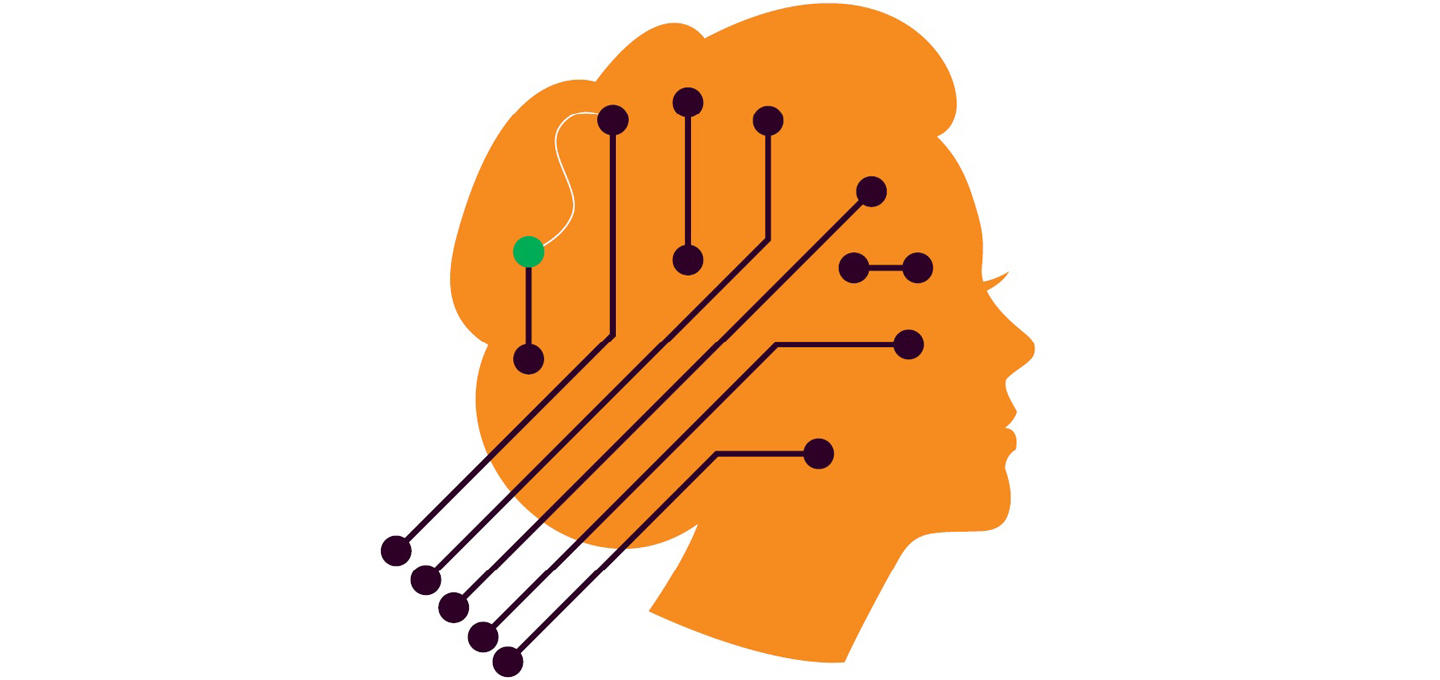
SYLVER ARTS/ISTOCK IMAGES
In the video, the woman sitting on the hospital bed describes what it’s like when her anxiety takes over.
“I’m notorious for being my own worst critic and overthinking to the point that it’s counterproductive for me,” she says. “If I’m nervous about anything, it gets a hold of me instead of me controlling it.”
From off camera, Alik Widge, an M Health Fairview psychiatrist and assistant professor at the University of Minnesota Medical School, asks “And for a few minutes, it sounds like that was a little bit different? It [the anxiety] was there, but not as much?”
“Yeah,” the woman says, her voice turning hopeful. “But it just couldn’t get to me.”
The woman was recounting her experience as a participant in Widge’s clinical study that uses brain stimulation technology to treat severe mental illness. Her story provides a brief glimpse into what Widge hopes is the future of mental health care.
“For that moment, this patient had control over her own brain,” he says. “What if we could give people that control not just for a moment, but all the time?”
Computational psychiatry
To understand Widge’s vision, you have to think about the brain the way he does—as the world’s most complex computer.
Widge calls himself a clinical brain engineer, but as a kid, he might have gone by something different: a computer nerd. He loved tinkering with all kinds of electronics, figuring out how they’re wired and how circuits communicate. His childhood interest evolved into a fascination with the human brain, which led him to become one of only a few people in the world trained as both a biomedical engineer and a clinical psychiatrist.
It’s a combination that allows him to view the brain less as a monolithic lump of gray matter and more as a computational device made up of circuits that communicate with each other through electrical rhythms.
“For our minds to function, that communication has to happen,” Widge says. “And mental illnesses are when that communication breaks down.”
He realized that mental illnesses thought to be very different—like anxiety, addiction, and obsessive-compulsive disorder, for example—might actually have a common culprit: the inability to think flexibly.
For most people, when harmful thoughts go through their heads, they’re quickly overridden by healthy, more normal ones. But for some people with mental illness, no matter how much they want to move past their anxiety, craving, or obsession, part of their brains won’t let them.
Widge wondered: what if we could find and correct the out-of-sync electrical rhythms in the brain that are responsible for inflexible thinking, and by extension, a whole host of mental illnesses?
Search and stimulate
Widge joined forces with researchers at Massachusetts General Hospital to test the theory.
They identified 12 patients who were undergoing brain surgery for epilepsy. The procedures required the placement of hundreds of electrodes throughout the brain to monitor activity and identify the source of their seizures.
“These people agreed to participate in our study,” Widge explains, “which meant we could use the electrodes that were already inside their brains to monitor and stimulate their brain activity as they completed a lab task we designed.”
The task tested the patients’ ability to think flexibly. As the participants performed the task, Widge and his team mapped the regions of the brain and the rhythms responsible for flexible thinking.
They identified a specific rhythm, known as the theta band, that appeared to be particularly conducive to flexible thinking. And as luck would have it, previous research told them that a certain region in the brain could boost theta band activity throughout the rest of the brain, if stimulated with a small amount of electrical current. When a patient began to perform poorly on the lab task, Widge and company stimulated that region of their brain. Sure enough, their mental function improved.
Several of the patients in the study—including the woman in the video—also suffered from severe anxiety. After receiving the targeted stimulation, they reported a reduction in their symptoms and a renewed ability to focus on thoughts of their choice.
Widge cautions that inflexible thinking is only one aspect of mental illness, and deep brain stimulation isn’t a viable treatment for every person who suffers from disorders like anxiety and depression. But for some people with severe illness, more control over their thinking might be just what they need to move forward.
“For these people, [inflexible thinking] is a single stone that’s holding up the whole archway of their mental illness,” he says. “I think if we can knock out this one problem and just give them a little bit of mental wiggle room, they’ll be able to do the rest on their own, and the whole illness will just come cascading down.”
Widge and his team are now preparing to test their findings in a larger M Health Fairview clinical trial, which he hopes will launch next year.
They’re also on a mission to engineer a noninvasive medical device that could be used in a doctor’s office to monitor a person’s specific brain rhythms and provide timely stimulation to boost their mental function.
To find out how your gift can make a difference in mental health research, contact Kristen Rasmussen at [email protected] or 612-625-5192.



